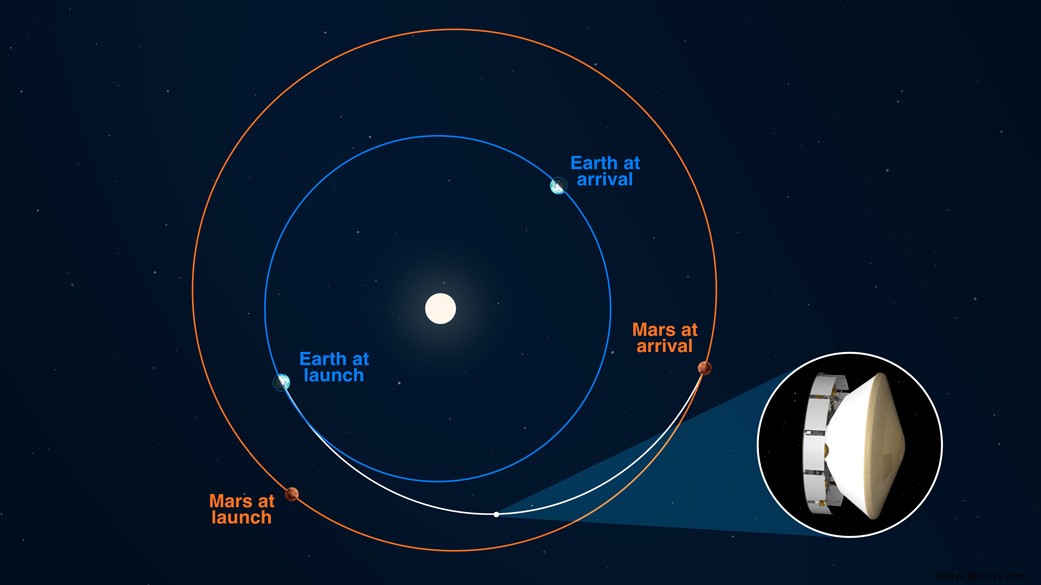Since leaving Florida on July 30, the Mars 2020 mission and its Perseverance rover are already halfway through their journey to the red planet. Landing is still scheduled for next February.
On July 30, NASA's Mars 2020 mission was launched. Its goal is to deploy the Perseverance rover to the surface of the Red Planet in an effort to search for traces of microbial life. It will also be a question of putting the most promising samples under seal for a future return to Earth where they will be analyzed with state-of-the-art instrumentation. The American agency also intends to take advantage of this mission by testing Ingenuity, its small rotorcraft.
In the meantime, the rover and its rotorcraft, well wedged under its belly, continue their journey towards the red planet. According to NASA, the mission had already covered half of the way on Tuesday, approximately 235.4 million kilometers . “At 1:40 p.m. PT today [Tuesday, October 27]our spaceship had as many miles in its rearview mirror as it did in front of its windshield “, said Julie Kangas, of the Jet Propulsion Laboratory (Southern California). “This is an important step. Next stop, Jezero Crater! "
Note that Perseverance is only halfway through its journey if you factor in the number of miles. In reality, "the rover is not halfway between the two worlds “, continues the researcher. “In a straight line, Earth is only 42.7 million kilometers behind Perseverance, and Mars is 28.8 million kilometers ahead “.
At the current distance, it takes about 2 minutes and 22 seconds JPL mission controllers to communicate with the spacecraft. By the time of landing, Perseverance will have covered 470.8 million kilometres and Mars will be positioned approximately 209 million kilometers away of the earth. At this point, a transmission will take approximately 11.5 minutes to reach the ship.

On the "maintenance" side, NASA engineers fired the rover's thrusters into deep space twice on August 14 and September 20 . This corrected its trajectory towards the red planet. Perseverance's mission plan calls for three more of these maneuvers before landing in Mars' Jezero Crater scheduled for February 18, 2021.
The team also continues to check the various ship systems. The RIMFAX (ground penetrating radar) and MOXIE (which aims to produce pure oxygen from Martian CO2) instruments were tested and found to be "in good condition" on October 15, for example. Examination of the PIXL instrument, a fluorescence spectrometer, also went as planned the next day.